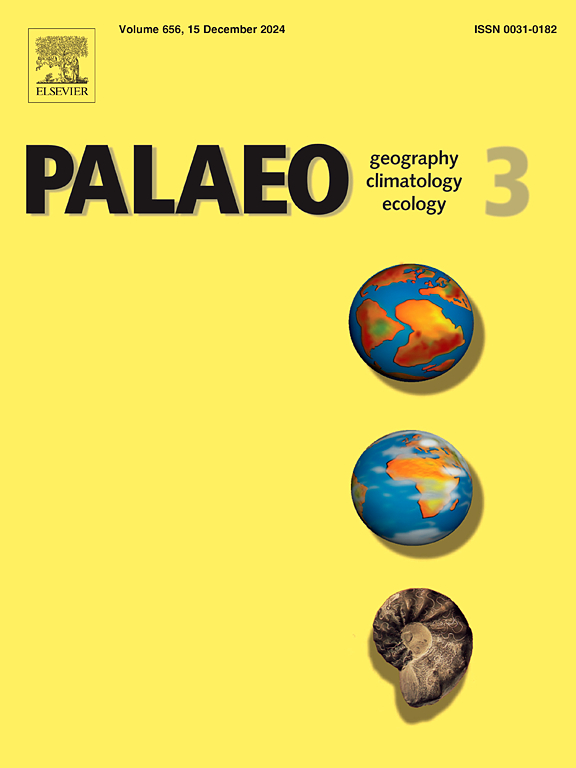Sedimentary records of the southern Taiwan Strait since the late Pliocene and implications for sea-level and tectonic changes
IF 2.6
2区 地球科学
Q2 GEOGRAPHY, PHYSICAL
Palaeogeography, Palaeoclimatology, Palaeoecology
Pub Date : 2025-02-05
DOI:10.1016/j.palaeo.2025.112797
引用次数: 0
Abstract
The Taiwan Strait, connecting the East China Sea to the north and the South China Sea to the south, lies adjacent to the tectonically active Zhe-Min Uplift and the Taiwan Orogenic belt; however, its sedimentary history, such as geochronology, depositional processes, and controlling factors, remains largely unclear. This report presents an integrated study on a 160-m long sediment core (ZK01) retrieved from the southern Taiwan Strait, in terms of magnetostratigraphy, luminescence dating, and sediment grain-size and color. Our findings indicate that the basal age of core ZK01 was ∼4 Ma, with the Quaternary boundary at a depth of 108 m, and the boundary between the lower and middle Pleistocene (0.77 Ma) at 19 m. Prior to 1.07 Ma, the sediment accumulation rate was relatively stable, ranging from 34.4 to 43.3 m/Ma, suggesting a consistent depositional environment. Between 1.07 and 0.77 Ma, the rate increased to 98 m/Ma, likely linked to regional tectonic activity and climate variability during the Mid-Pleistocene Transition (MPT). Constrained by these geochronological results, sediment grain-size and color indices (L*, a*, and b*) were strongly influenced by sea-level fluctuations during the Plio-Pleistocene epoch, while neritic deposits in the southern Taiwan Strait after the MPT were thinner than those in the Yellow and Bohai Seas, likely resulted from local tectonic uplift.
求助全文
约1分钟内获得全文
求助全文
来源期刊
CiteScore
5.90
自引率
10.00%
发文量
398
审稿时长
3.8 months
期刊介绍:
Palaeogeography, Palaeoclimatology, Palaeoecology is an international medium for the publication of high quality and multidisciplinary, original studies and comprehensive reviews in the field of palaeo-environmental geology. The journal aims at bringing together data with global implications from research in the many different disciplines involved in palaeo-environmental investigations.
By cutting across the boundaries of established sciences, it provides an interdisciplinary forum where issues of general interest can be discussed.

 求助内容:
求助内容: 应助结果提醒方式:
应助结果提醒方式:


